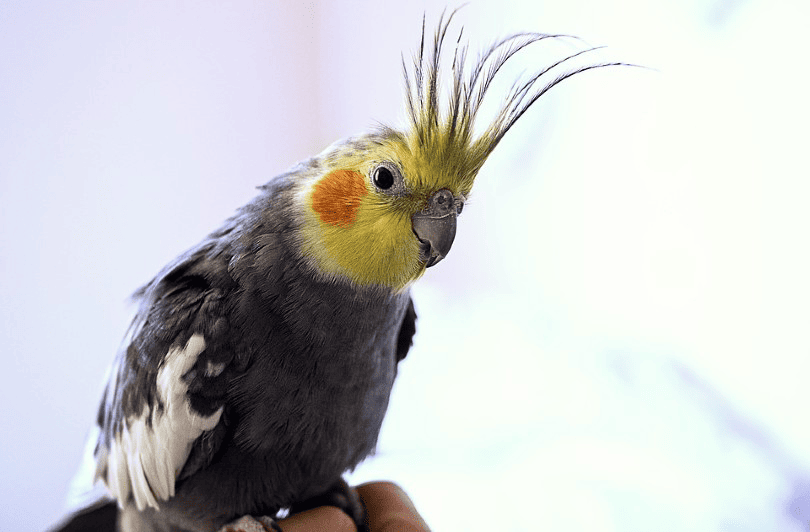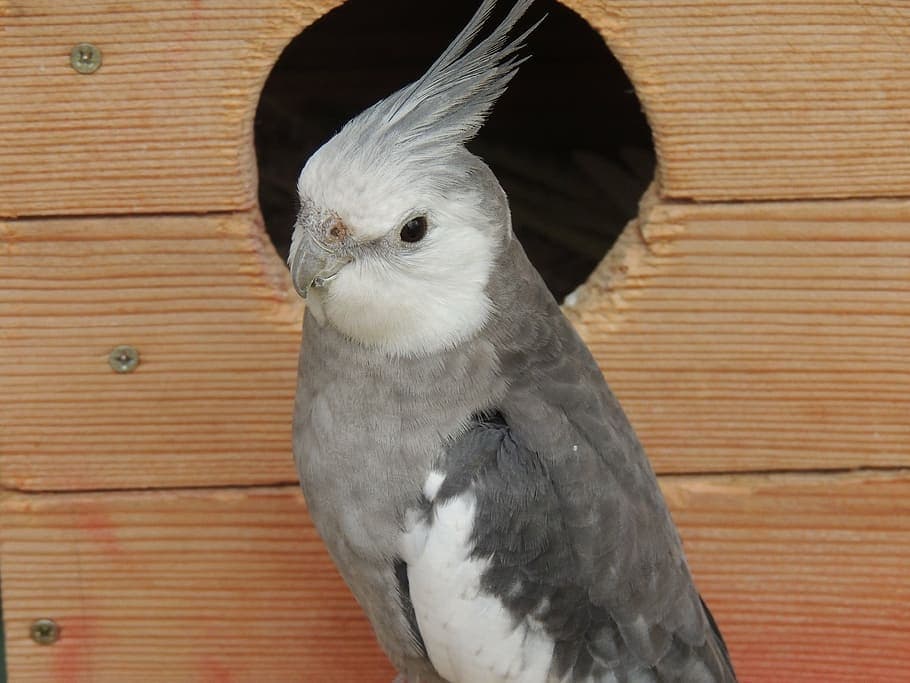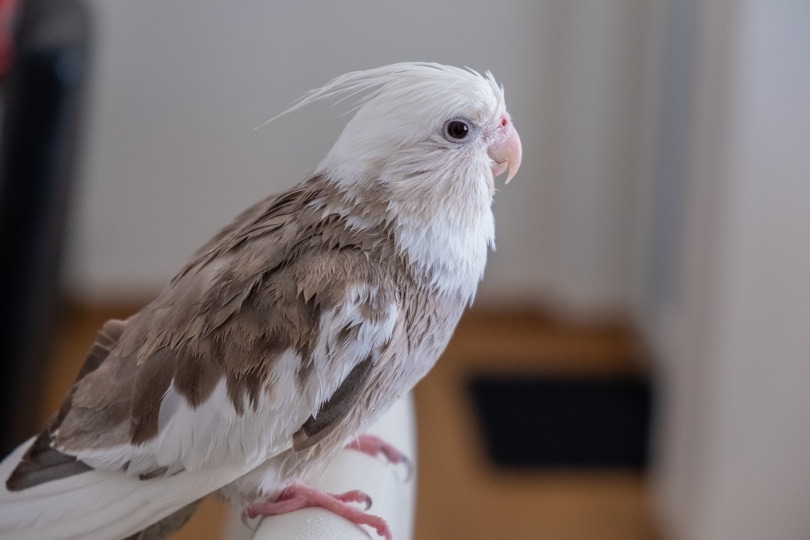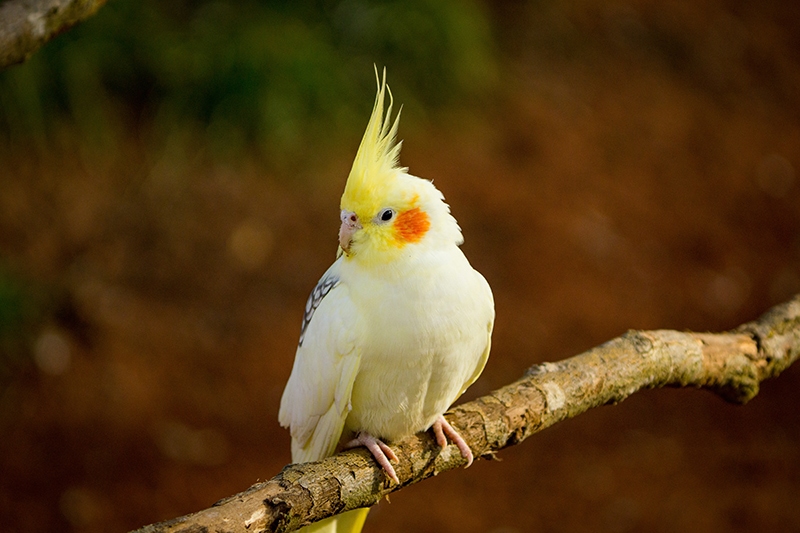
The cockatiel might look small, cute, and timid, but they are mighty parrots that love attention and enjoy indulging their curiosities. These birds are smart, interactive, and easy to train (to an extent). They may or may not talk or whistle for you. Keep reading to learn everything there is to know about the personality and care needs of the cockatiel.
Quick Facts about Cockatiels
Cockatiel Overview, Origin and History
Cockatiels are native to Australia, where they are commonly referred to as weiros or quarrions. They were discovered in the 1700s as the smallest subfamily species of cockatoo. These small to medium-sized parrots can be found living free in the Australian Outback, but they live in captivity as pets all over the world.
Cockatiels are considered easy to breed, so there is no shortage of them on the pet market. These birds got their genus name from the first Europeans to observe them in their natural surroundings. The Europeans named the birds after mythical nymphs due to their beauty and seemingly mysterious behaviors, hence their scientific name Nymphicus hollandicus.

Temperament
The cockatiel is curious yet gentle, independent yet affectionate. They do not mind keeping themselves busy for hours on end by talking in a mirror and playing with toys. However, they also enjoy being held and petted regularly by their human family members. They prefer to perch on a shoulder or finger rather than being cuddled, which can make them too finicky for regular handling by young children.
Without proper socialization, these birds can become “nippy” and will bite anyone they think is getting too close or becoming too threatening to them. Cockatiels are smart and they love to please their family members, making them easy to train from a young age. They can learn to wave, whistle, and even ring a bell on command.
These little parrots thrive when it comes to overcoming challenges, so they need new activities and toys to interact with regularly.
Speech & Vocalizations
While some cockatiels take to talking and whistling like it is second nature, others take some time to warm up to those skills. And still others just will not budge when it comes to saying a word or whistling a note. You will not know whether your new pet cockatiel will talk or whistle until you get home and start working with them.
Some experts believe that with time and patience, most cockatiels will eventually start talking or whistling – but not both. Some also believe that males are more likely to talk or whistle than females. If your pet cockatiel talks to you, there will be no problem understanding what they are saying. But if they only make sounds and whistle, you may not know what they are trying to communicate to you.
Here are the sound and vocalization patterns you should know about:

Cockatiel Colors and Markings
Cockatiels may have pigmentation mutations which give them a different color and marking variation. Pigment mutations can be passed down between generations, so many breeders know exactly which colors and marking types their birds are likely to display as they become adults. These are the basic color and marking variations to be aware of:
Caring for the Cockatiel
The cockatiel enjoys spending time on perches outside and indoors, but they need a dedicated enclosed space to spend some of their time alone or when a lot of commotion is going on in the house. Their cage should be large enough to accommodate multiple perches, a few hanging toys, food and water bowls, and lots of wing flapping.
A cage that features an oversized door is ideal so that the bird can make its own way back into its habitat when the time comes. These birds like to forage, so they should be provided with newspaper and hay on the bottom of their cage for foraging reasons. Crumbled millet or a sprinkle of seeds can be poured over the ground cover to make foraging fun.
They should be allowed out of their cage regularly to interact with other household members. They can be provided with multiple resting areas throughout the house where they can hang out without ruining furniture. A shoulder to sit on at least occasionally is a must as well.
When it comes to grooming, cockatiels are easy to deal with. Their nails should be trimmed regularly to keep scratching to a minimum. Their cage habitat should be cleaned multiple times each week to help keep their feathers clean. They should also be provided with a bathing bowl to clean themselves in. If these birds get dirty, they can be gently cleaned under running water or “sponge bathed” with the help of a damp cloth.
If you’re new to the wonderful world of cockatiels, you’ll need a great resource to help your birds thrive. We highly recommend taking a closer look at The Ultimate Guide to Cockatiels, available on Amazon.
This excellent book covers everything from the history, color mutations, and anatomy of cockatiels to expert housing, feeding, breeding, and health care tips.
Common Health Problems
There are a few common health problems that the cockatiel can develop at any age, such as nutritional deficiencies. For example, birds fed a seed-heavy diet can become deficient in vitamin A. In this case, fruit, vegetable, and commercial pellet intake should be increased.
Other common problems include:

Diet and Nutrition
Cockatiels should be fed commercial diets made of seeds, grains, and real fruits and vegetables. They should also get pellets that are made up primarily of grains. Their food should be made specifically for their species. Artificial ingredients should be avoided whenever possible. Owners can feed their cockatiels fresh fruits like cantaloupe, pineapple, and oranges as well as veggies like carrots and beets at snack time to help round their diet out.
Exercise
These birds require plenty of exercise throughout the day, but the amount of needed exercise depends on the specific bird’s personality and temperament. Some cockatiels are content to perch in their cage near a mirror where they can look at themselves. Others love to explore and seem not to stay in any one place for long periods.
Either way, cockatiels should be provided with multiple toys to interact with while spending time in their cages. They should also be allowed to roam freely in an enclosed porch or room in the home regularly. A harness can be purchased for outdoor experiences, whether it is a walk around the block or a trip to the local farmer’s market.

Where to Adopt or Buy a Cockatiel
Cockatiels are so popular and are so easy to breed that they can be purchased from most pet shops, big and small. Breeders also sell these parrots directly to consumers. Also, these birds can sometimes be found at animal shelters where they are desperately looking for a new place to call home.
Conclusion
The cockatiel is a lively, fun bird to interact and live with. They are easy to care for, and they can adapt to many different types of environments if they get the attention, interaction, and affection that they crave. They love other birds, whether parrots or not, making them a perfect choice for households that already own other birds. Are you considering adopting a cockatiel to call your own? What do you love most about these adorably feathered companions? We want to know what you think about this amazing bird! Let us know by leaving a comment down below.
Related Reads:
- Albino Cockatiel Bird Species – Personality, Diet & Care Guide (With Pictures)
- Can Cockatiels Eat Pumpkin Seeds?
- 100+ Cockatiel Names: Ideas for Bright & Playful Birds
Featured Image Credit: Joshua_Willson, Pixabay










